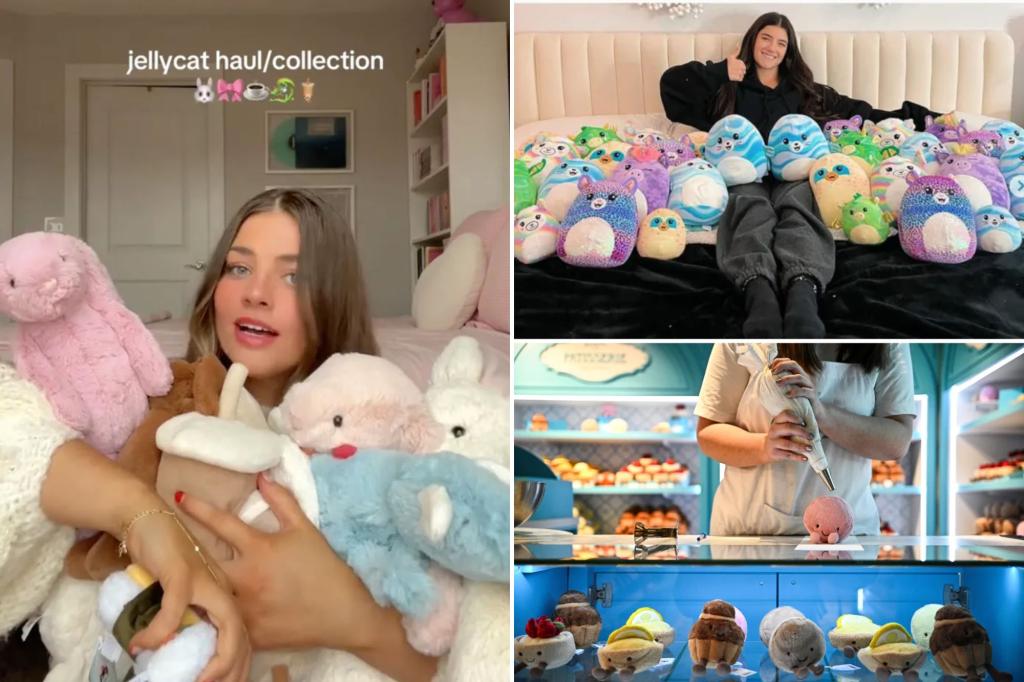The Plush Toy Boom: A Kidult Phenomenon
In recent years, the world has witnessed a fascinating cultural shift, particularly among Gen Z and young adults, who have embraced the joy of collecting plush toys with unprecedented enthusiasm. This trend, often referred to as the "kidult" movement, reflects a growing acceptance of playful, whimsical hobbies that were once reserved for children. At the heart of this movement is the plush toy boom, driven by brands like Jellycat and Squishmallows, which have captured the hearts of millions. For many young adults, these soft, cuddly companions have become a source of comfort, joy, and even a statement of personal identity. Andrew Elliott, a 25-year-old Jellycat collector, sums it up perfectly: "They make me happy when I see them. We don’t live in the most fun and friendly times, so I think surrounding your house with smiley faces is a good thing." This sentiment resonates deeply with a generation seeking solace in the simple pleasures of life.
The Rise of Jellycat and Squishmallows
The plush toy market is thriving, thanks in large part to the meteoric rise of brands like Jellycat and Squishmallows. Jellycat, known for its adorable and quirky designs, has become a favorite among collectors, with its extensive line of animal characters and anthropomorphized objects gracing gift shop windows worldwide. Similarly, Squishmallows, with their signature soft, rounded shapes, have become a global phenomenon, appealing to both children and adults alike. Brian Benway, a senior tech and gaming analyst at Mintel, highlights the brand’s success: "Plush toy brands like Jellycat and Squishmallows are tracking with the growth of Legos, a leading brand in the toy and game industry, so to see plushies up there with Lego is very positive for them." This comparison underscores the significant cultural and market impact of these plush toys, which are no longer just playthings for children but have become a staple in the lives of young adults.
The Power of Social Media in Fueling the Trend
Social media platforms, particularly TikTok, have played a pivotal role in the proliferation of plush toy culture. The hashtag "#plushies" has amassed millions of videos, showcasing collectors proudly displaying their prized possessions, sharing their latest finds, and even taking viewers on tours of themed stores like the FAO Schwarz Jellycat Diner in Rockefeller Center or the Squishmallow-themed fish-and-chips truck at Selfridges London. These online communities have created a sense of belonging and camaraderie among collectors, encouraging them to embrace their passion without fear of judgment. Chloe Day, a 25-year-old Jellycat collector, shares her experience: "If you tell people you collect cuddly toys, it can feel as if you’re going to be judged because it feels like a children’s hobby. But then when you go on TikTok and see all these people the same age as you – women and men – it encourages you to not hold yourself back." Social media has thus become a powerful tool in normalizing and celebrating the "kidult" lifestyle.
The Appeal of Plush Toys to Adults
While plush toys are traditionally associated with childhood, their appeal to adults lies in their ability to evoke a sense of nostalgia, comfort, and joy. For many young adults, these toys serve as a reminder of simpler times, offering a much-needed escape from the stresses of modern life. The Squishmallow craze, which began several years ago, is a prime example of this trend. In 2021, a New York City kids’ store sold out of Squishmallows in just a few days, with teenagers like Lexia Hayden clamoring to get their hands on the adorable stuffed animals. As Lexia’s mom, Adele, noted, "Lexia is always cuddling with hers when she’s doing homework or reading — it’s like a stuffed animal that really curls into your body." This sentiment is echoed by many young adults who find solace in the tactile comfort of plush toys, whether they’re studying, working, or simply relaxing at home.
The Cultural Significance of the Plush Toy Boom
The plush toy boom is more than just a passing fad; it represents a broader cultural shift toward embracing joy and self-expression in a world that often prioritizes productivity and practicality. As Brian Benway notes, "It’s becoming more acceptable. A lot of people are taking the approach that, well, I don’t care if other people think this is dumb, this brings me a little bit of happiness, a little bit of joy, so I’m going to keep doing it." This mindset is especially prevalent among Gen Z, who value authenticity and individuality. The plush toy trend also highlights the power of nostalgia, as many of these toys are reminiscent of childhood favorites like Beanie Babies, which were a cultural phenomenon in the 1990s. Andrew Elliott draws a direct comparison between Jellycat’s success and the Beanie Baby craze, calling them the "modern-day Beanie Baby." This nostalgic appeal, combined with the unique designs and high-quality materials of today’s plush toys, has made them a staple in the lives of many young adults.
The Future of the Plush Toy Market
The plush toy market is poised for continued growth, with projections indicating an 8.2% annual increase over the next five years, according to data from Grand View Research. This growth is driven not only by the demand for comfort and nostalgia but also by the increasing acceptance of "kidult" culture. As more adults embrace their love for plush toys, brands are likely to expand their product lines and marketing strategies to cater to this demographic. Celebrities like Lady Gaga, who has proudly showcased her Squishmallow collection on Instagram, are helping to further normalize the trend. As Benway points out, "If Lady Gaga can do that, anybody can." This cultural validation, combined with the ongoing influence of social media, ensures that the plush toy boom is here to stay, bringing joy and comfort to millions of people around the world.












